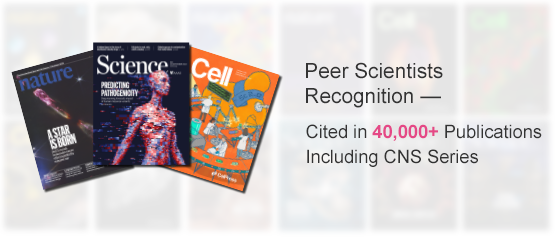
|
| Cellular Senescence in Cornelia de Lange Syndrome : A Pharmacological Target? |
 |
Tuesday, April 30, 2024 |
 |
CEST 10:00 / IST 13:30 / JST & KST 17:00 |
|
 |
| Dr. Michel Pucéat |
• Research director at Inserm
• Team leader and senior researcher |
|
 |
|
| In This Webinar, You Will Learn: |
• Programmed embryonic cell senescence in cardiac developmental biology.
• The role of TGF-β pathway in regulation of embryonic senescence.
• A novel pharmacological strategy for postnatal Cornelia de Lange Syndrome (CdLS) patients. |
|
|
|
| About This Webinar: |
| Cornelia de Lange Syndrome (CdLS), largely caused by mutations in the cohesin DNA loader NIPBL, is a rare multi-organ developmental disorder for which there is currently no therapeutic strategy. |
| To faithfully mimic the disease and identify potential therapies, we generated a novel C57Bl/6J Nipbl-haploinsufficient mouse model. Under this genetic background, the mice recapitulate many of the defects observed in CdLS patients. These mice featured a severe growth delay. Both the proliferative and hypertrophic zones of the bones were reduced. Nipbl+/- embryonic and neonatal hearts developed ventricular hypertrophy, aortic and valve defects associated with a persistent truncus arteriosus and a ventricular septal defect. Neck, face and esophageal muscles derived from the embryonic second heart field were less developed in Nipbl+/- than in wt embryos. Adult hearts featured aortic senescence, stenosis, as well as left ventricular hypertrophy. We also used human iPS (induced pluripotent stem cells) derived from CdlS patients, those cells were differentiated into smooth muscle cells. Both CdLS iPS cells and smooth muscle derivative featured a cell senescence phenotype. |
| Using proteomics and RNA-sequencing, we identified a dysregulated TGF-β pathway in the outflow tract of embryonic hearts. We found senescent cells in Nipbl+/- embryonic hearts, limb primordium cartilage, and in postnatal tissues, including muscle and brain cortex. Treatment of pregnant Nipbl+/- mice with a TGF-βR inhibitor (galunisertib) prevented cell senescence and rescued both the cardiac phenotype and the size of mice at birth. This drug, used in oncology, also blocked the senescence of iPSC-derived smooth muscle cells from CdLS patients. |
| Altogether, we report that an exacerbated TGF-β pathway, associated with embryonic programmed cell senescence, is responsible for many defects in a CdLS mouse model. This druggable cell senescence pathway paves the way for a preventive and/or therapeutic strategy for postnatal CdLS patients. |
 |
| MCE Webinar |
| The MCE webinar is committed to offering an official platform for global experts and researchers in the fields of medicine, pharmacy, biology, and chemistry. By facilitating knowledge exchange, the MCE webinar aims to contribute to the global biopharmaceutical industry by promoting extensive sharing of information and expertise. |
|
| MCE Past Webinar: |
|
|

|